Biker massacre in Southwestern Ontario .. danger also lurks on country roads
Apr 13th, 2006 | By Citizen X | Category: Crime Stories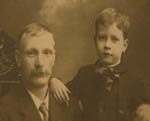 It is being called “the worst mass murder in Ontario history” even by the media in the US and Australia. When it first hit the news the Ontario Provincial Police stressed that the eight victims were from the Greater Toronto Area (GTA). But as the plot thickens the story may be more notable for its country roots.
It is being called “the worst mass murder in Ontario history” even by the media in the US and Australia. When it first hit the news the Ontario Provincial Police stressed that the eight victims were from the Greater Toronto Area (GTA). But as the plot thickens the story may be more notable for its country roots.
One of the eight victims was actually from Chatham in Southwestern Ontario. Only three were from the City of Toronto. The other four were from the suburban to vaguely rural GTA locations of Keswick, Milton, Oakville, and Sutton. The bodies were found in abandoned cars just west of St. Thomas, far away from any definition of Greater Toronto.
Strangely enough, the five people charged with the murders are from the same Southwestern Ontario countryside whimsically evoked by the Harvard economist John Kenneth Galbraith, in his droll 1960s memoir of his Canadian childhood called The Scotch. The crime scene is right in the Galbraith family-farm homeland around Dutton, Iona, Iona Station, and Shedden.
One senior police officer has “described the shootings as an internal cleansing’,” within a local chapter of the Texas-headquartered biker gang known as the Bandidos. The “general public” has “little to fear.” But as the Associated Press in the USA has put it: “The mostly farming families in Iona and other nearby townships – each with a few hundred residents – were still stunned Tuesday by the kind of violence usually reserved for big cities.”
Remembering the Black Donnellys …
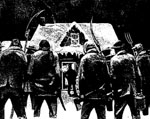 In fact, the notion that this kind of violence is usually reserved for big cities has always been something of a myth. To those steeped deeply in old Ontario folklore, the early 21st century Bandido biker massacre in the old agrarian democracy of The Scotch is bound to bring to mind the late 19th century massacre of the Black Donnellys – in the Lucan area of the rural Southwest, some distance due north of Shedden and Iona Station and so forth.
In fact, the notion that this kind of violence is usually reserved for big cities has always been something of a myth. To those steeped deeply in old Ontario folklore, the early 21st century Bandido biker massacre in the old agrarian democracy of The Scotch is bound to bring to mind the late 19th century massacre of the Black Donnellys – in the Lucan area of the rural Southwest, some distance due north of Shedden and Iona Station and so forth.
The Donnelly murders in the Lucan area, on February 4, 1880, had only five victims. And from this angle the eight victims further south, sometime on April 7 and/or 8, 2006, do add up to “the worst mass murder in Ontario history.”
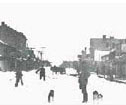 The old Donnelly murders were also a more exclusively local phenomenon. The Donnellys were an irascible family of Irish immigrants who quarreled with many of their neighbours. Suddenly, in the middle of a late 19th century Canadian winter, five of them turned up dead. And in the end “no one was ever found guilty of the crime.”
The old Donnelly murders were also a more exclusively local phenomenon. The Donnellys were an irascible family of Irish immigrants who quarreled with many of their neighbours. Suddenly, in the middle of a late 19th century Canadian winter, five of them turned up dead. And in the end “no one was ever found guilty of the crime.”
(Though, as it happens, this coming June 2006 you can see a play called The Donnelly Re-Trial at The Old Courthouse in the Southwestern Ontario regional metropolis of London – London, Ontario, that is, and of course not London, England. “The Donnelly Re-Trial re-creates the tension of the original court proceedings, and attempts to determine what happened during the early hours of February 4th, 1880. The play is staged in the same room where the original trial took place … and contains the actual words of the participants … carefully researched and edited to create an engrossing, living theatrical experience. At the end of each performance, a jury consisting of audience members will reach a verdict of guilty or not guilty, based on the original evidence presented to them … GET YOUR TICKETS NOW.”)
Some early theories about April 7/8, 2006 …
 Unlike the old Donnelly murders, the Ontario Bandido biker massacre in early April 2006 was clearly not strictly a local affair in the rural Southwest. Everyone’s local world nowadays is more inter-connected with other worlds elsewhere.
Unlike the old Donnelly murders, the Ontario Bandido biker massacre in early April 2006 was clearly not strictly a local affair in the rural Southwest. Everyone’s local world nowadays is more inter-connected with other worlds elsewhere.
Even setting aside the Greater Toronto Area, the Donnelly murders had no conceivable connection at all with the Bandido biker gang headquarters several thousand miles away in Galveston, Texas. But the best information at the moment seems to be that the April 7/8, 2006 murders probably did not have much to do with Galveston either.
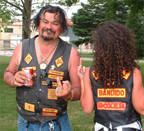 Wednesday, April 12 reports in both the Toronto Globe and Mail and the Toronto Star have begun to clarify the picture – a little.
Wednesday, April 12 reports in both the Toronto Globe and Mail and the Toronto Star have begun to clarify the picture – a little.
In Canada the Texas-headquartered Bandidos biker gang has “just one 12-member chapter in Toronto and a smaller, junior chapter in Winnipeg.” There were some early theories that “Bandidos headquarters in Texas ordered the killings” in Ontario, in some connection with larger North American struggles against the Hell’s Angels biker gang. But these theories are now thought implausible by “police sources on both sides of the border.”
Instead, what happened in the Southwestern Ontario Galbraithian homeland on the evening of April 7 and early morning of April 8 is said to be much more like an “angry confrontation” within the Canadian Bandidos’ Toronto chapter – probably also involving a drug deal – that somehow got out of hand and “spiralled into a bloodbath.”
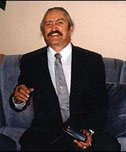 Again, quite a few in the Bandidos’ Toronto chapter actually live (or lived) outside the City of Toronto proper. In particular Wayne Kellestine, 56 – a man with a “track record of erratic, violent behaviour” and a “documented love of weapons” – currently lives in Southwestern Ontario, in a “rundown farmhouse, near Dutton.”
Again, quite a few in the Bandidos’ Toronto chapter actually live (or lived) outside the City of Toronto proper. In particular Wayne Kellestine, 56 – a man with a “track record of erratic, violent behaviour” and a “documented love of weapons” – currently lives in Southwestern Ontario, in a “rundown farmhouse, near Dutton.”
(Dutton is a place about which even John Kenneth Galbraith had a few vaguely harsh words, in his book on The Scotch. But Kellestine’s residence has also been described in the media as an “Iona Station farm” – which seems perilously close to the old Galbraith homestead itself).
In a nutshell, perhaps, the so-called Toronto chapter of the Bandidos assembled for some purpose at Kellestine’s farmhouse on the evening of April 7. And then, perhaps again, in some almost accidental way one part of the gang wound up murdering another part. (Or, as somewhat alternatively reported in the April 12 Ottawa Sun, “an ex-Bandidos biker said the eight men were taken out when they visited Kellestine to kick him out of the club.'”)
Trying to keeping the cast of characters straight …
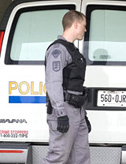 Just for the record, five people have now been charged with first-degree murder in the April 7/8 massacre. They include Wayne Kellestine, along with “Erick Niessen, 45, and Kerry Morris, 56, both of Monkton, Ont. [a town considerably north and a bit east of Dutton – and Kerry Morris has subsequently been reported as a resident of nearby Mitchell and not Monkton itself]; Frank Mather, 32, Dutton-Dunwich Township, Ont.; and Brett Gardiner, 21, no fixed address.”
Just for the record, five people have now been charged with first-degree murder in the April 7/8 massacre. They include Wayne Kellestine, along with “Erick Niessen, 45, and Kerry Morris, 56, both of Monkton, Ont. [a town considerably north and a bit east of Dutton – and Kerry Morris has subsequently been reported as a resident of nearby Mitchell and not Monkton itself]; Frank Mather, 32, Dutton-Dunwich Township, Ont.; and Brett Gardiner, 21, no fixed address.”
Kellestine is said to be “a prominent member of the Bandidos biker club” (or used to be?). But “Kellestine’s houseguest, Frank Mather, 32″ has apparently “never been a biker,” though he “has a lengthy criminal record.” The exact biker status of the other three who have been charged is unclear. Kerry Morris is a female. The others are males.
(The AP report says “Kellestine was the only member of the Bandidos among those arrested for the killings.” The Ottawa Sun reported earlier that “three Bandidos” – presumably from the Toronto chapter as well – “have not been seen since the murders.” But as of April 13 the Toronto Star has now interviewed these surviving three Bandidos, without revealing their names.)
 The eight victims of the massacre include six so-called “full-patch” Bandidos: “George Jesso, 52, of Toronto; George Kriarakis, 28, of Toronto; Luis Manny Raposo, 41, of Toronto; Francesco Salerno, 43, of Oakville, Ont.; John Muscedere, 48, of Chatham, Ont.;” and “Paul Sinopoli, 30, of Sutton, Ont. … Also killed were: Jamie Flanz, 37, of Keswick, Ont., described as a prospect’ member of the gang;” and “Michael Trotta, 31, of Milton, Ont., an associate member.”
The eight victims of the massacre include six so-called “full-patch” Bandidos: “George Jesso, 52, of Toronto; George Kriarakis, 28, of Toronto; Luis Manny Raposo, 41, of Toronto; Francesco Salerno, 43, of Oakville, Ont.; John Muscedere, 48, of Chatham, Ont.;” and “Paul Sinopoli, 30, of Sutton, Ont. … Also killed were: Jamie Flanz, 37, of Keswick, Ont., described as a prospect’ member of the gang;” and “Michael Trotta, 31, of Milton, Ont., an associate member.”
It is intriguing as well that even though Wayne Kellestine is known to some associates as a dangerous and unpredictable man, who has spent time in jail over the past several years, some of his country neighbours are surprised that he has been charged with the murders:
“Even if he is a Bandido, he was the nicest man, always respectful,’ said Iona resident Kim Baum, who helps out at the Holland House restaurant, where Kellestine sometimes stopped for coffee or a beer with his Bandido comrades … They never talked about deals when they were in here; I told him that in the beginning, that he could not talk about his deals in here, and he respected that,’ said Marty Angenent, the owner of the Holland House. We don’t treat him like an outcast here.'”
How did the police figure so much of it out so fast?
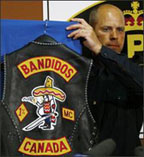 You may wonder just how the Ontario Provincial Police (OPP) managed to charge five people for the April 7/8 massacre as quickly as they did. The April 12 report in the Toronto Star sheds some intriguing light on this side of the story.
You may wonder just how the Ontario Provincial Police (OPP) managed to charge five people for the April 7/8 massacre as quickly as they did. The April 12 report in the Toronto Star sheds some intriguing light on this side of the story.
On the evening of April 7, police officers from the Durham Region, due east of the City of Toronto, had actually “followed three of eight Bandidos from the Toronto area” to Wayne Kellestine’s rundown farmhouse between Dutton and Iona Station. “Suspecting a major drug deal could be in the works, investigators tailed the trio.” But: “After watching the three men enter the farmhouse, the officers left, assuming the bikers were there for a party.”
For whatever exact reasons, police now seem to believe, “the three Bandidos” were “shot dead, their bodies stuffed into cars that were driven into a field. It’s believed five other Bandidos arrived separately later that night, only to be systematically killed and their bodies similarly disposed of.”
Once the bodies were discovered by a local farmer on the morning of Saturday, April 8, it did not take the OPP too long to discover what the Durham Region police had been up to the night before. And this led investigators straight to both Wayne Kellestine and his farmhouse.
 If further legal proceedings confirm that Kellestine and the four others who have been charged are the true perpetrators of the crime, it does still seem a bit odd that they would remain in the area, so that police could conveniently pick them up a few days later. But perhaps that is just another part of Wayne Kellestine’s strange and unpredictable personality.
If further legal proceedings confirm that Kellestine and the four others who have been charged are the true perpetrators of the crime, it does still seem a bit odd that they would remain in the area, so that police could conveniently pick them up a few days later. But perhaps that is just another part of Wayne Kellestine’s strange and unpredictable personality.
In any case, more is bound to come on this story. So stay tuned. It does seem to be saying a few interesting things about the way we are today, in both the big cities and the old rural townships of the legendary seed-bed of democracy, down on the North American family farm.
UPDATES: For further developments on this issue see “Ontario Bandido biker murders trial moves into high gear.” For the ultimate resolution: “Life in jail for Bandidos biker killers in Southwestern Ontario.”

